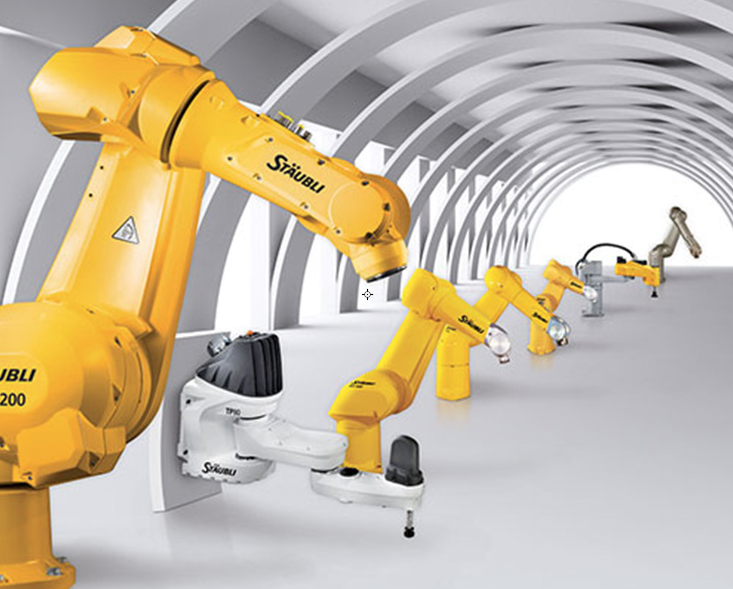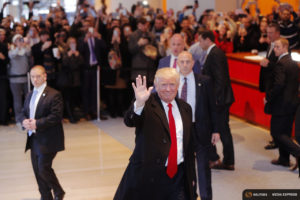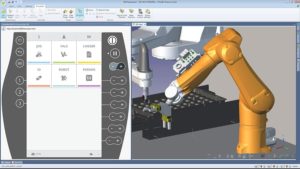Connecting revolutions: Exclusive interview with Stäubli Robotics automotive boss

Stäubli is one of the first industrial automation companies, having been established all the way back in the late-1800s and quickly developing what was then advanced technology for the weaving industry before the century was out. The company even owns Jacquard machines, Jacquard being the pioneering manufacturer of looms that defined the original Industrial Revolution – and the inventor of punched cards to control machines, from which flowed computer programming principles.
Then in the early 1980s, Stäubli bought the Unimation business from Westinghouse, Unimation being the company which developed the first industrial robot arm, the Unimate.
Today, Stäubli is still one of world’s largest industrial robotics and automation companies, and its product manager in the US is Paul Deady.

In an exclusive interview with Robotics and Automation News, Deady provides an overview of the Stäubli business.
He says: “Stäubli has been in existence since 1892, started in textiles, in a small shop, in Switzerland. It’s grown from there. Now, we have three divisions: textiles, of course, which served as the foundation for our business; connectors – we have a very big business in connectors; and then we got into robotics, and we’re actually one of the original robot companies.
“So, if you see ‘Unimation’ on the side of our robot – that’s an homage to the Unimate robot. Generally, as a milestone, the birth of industrial robotics in a big way can be traced back to 1985, and when Unimation put a robot into a General Motors facility.
“We were one of the distributors for Unimation at that time, and later, we bought the company from Westinghouse in 1987. So our roots run deep, back to the beginnings of the robotics revolution in automotive manufacturing.”
Deady’s area of responsibility at Stäubli is automotive, and being based in the US, he has a gigantic market in which to operate, with approximately 24 million vehicles produced in the country each year.
According to statistics released by the International Organization of Motor Vehicle Manufacturers (OICA), the number of vehicles produced by the top 10 countries in the second quarter of 2016 were as shown below.
Top auto manufacturing nations
- China – 12 million vehicles
- USA – 6.3 million
- Japan – 4.5 million
- Germany – 3.2 million
- South Korea – 2.2 million
- India – 2.2 million
- Mexico – 1.7 million
- Spain – 1.6 million
- Canada – 1.2 million
- France – 1.1 million
[visualizer id=”8999″]
OICA says the total number of vehicles manufactured around the world in the second quarter of 2016 was around 47 million. That’s in 39 countries the organisation names on its list, plus countries which it places in the “Others” category.
Supply and demand
Deady explains in more detail about what his job involves. “Primarily, we partner with automotive supplier communities, in all segments. So that’s exterior, interior, powertrain, electrical, chassis and so on. And we partner with these folks in a very… deep, symbiotic way, I would say.
“We’ve got working relationships with all the major names in the supplier community that you may have heard of.”
Among the leading automotive parts manufacturers are Bosch, Magna, and Delphi, to name but three.
The US motor vehicle and automotive parts manufacturing industry together produced a total output worth $70 billion in 2015, which in this day and age of trillion-dollar-derivative-driven-debt-debacles sounds like a modest amount, but as well as being of economic and strategic importance, the auto industry obviously has a special place in the American psyche.
It might be because the land mass of the US is so huge that you need a car if you want to go just about anywhere, or because America was probably the first country where just about everyone seemed to drive a car.

Certainly President-elect Donald Trump tapped into this sort of nostalgia in his campaign, although he mainly talked about wanting to bring manufacturing jobs back to the US. To that end, Ford has reportedly announced in the past few days that it will halt some plans to expand manufacturing overseas in favour of building factories in the US.
Even Foxconn – the Taiwan-headquartered manufacturer which makes iPhones and iPads for Apple mostly in China – is reported to be planning to expand its manufacturing operations in the US.
Manufacturing companies moving their operations back to the US might make for interesting headlines, and provide a boost to Trump, but it may not necessarily bring a lot of jobs back for humans; for robots and robotics companies, however, this could be the start of something big.
How do you articulate?
As Deady explains, the whole idea of introducing robots into the workplace was to eliminate the most difficult jobs for humans. “Traditionally, robots have been employed in repeatable tasks that are dirty or dangerous, or frankly not very aspirational for humans to do.
“Increasingly, robots are becoming more ubiquitous and their applications have become broader and broader, and will continue to do so.
“But that’s not to say that there’s still not a place for human beings… Mercedes-Benz, for example, has replaced some robots with human beings in their production facility because human beings are inherently adaptable, and have special articulations.
“Human beings are very astute at being able to pick out a part, manipulate it to the correct geometry, and place it where it needs to be.”
What Deady means – for those of us for whom “articulation” generally means speaking clearly – is that human beings can move in any direction and are a lot more agile than even the most sophisticated of robots.
This is the reason why Mercedes-Benz replaced some robots from their production line and brought humans in – to enable a higher level of customisation of their cars to satisfy the needs of their most fussiest of customers.
That’s not to suggest that robots are on the way out and that humans will now be back on the automaking production line in large numbers, but many believe it does herald a new and growing trend within manufacturing: high levels of customisation.
Robots will still be involved heavily in the process, but they’ll be connected together within the factory and without – meaning, around the world. This concept of a “smart factory” which is almost like a node on an “industrial internet” is being developed, or has already been implemented, by many or all of the leading manufacturers.
Observing trends
Deady offers his view: “In general, there’s two very broad themes which are changing the industry right now. One is collaborative robotics, or cobots. That’s a type of robot which has been defined by ISO standard 15066, which requires it to be force-limiting, and it’s limited to a certain speed, and so on… The idea is to make it so that you can very safely collaborate with the robot, interact with the robot, inside of a collaborative manufacturing space, so that human-robot work is safe.
“The other trend is Industry 4.0, which, broadly speaking, is about communication between machines and devices on a factory floor, making it a ‘smart factory’, if you will. Traditionally, manufacturing has involved a set of processes – such as programming the robot, programming the automation – and then it’s very static from there.
“The idea has always been to make the factory a more dynamic space that can adapt to different product cycles, and so on.”

This type of smart, connected manufacturing system is necessitating more computer-aided design applications, and Stäubli has its own industrial robot simulation program – the Stäubli Robotics Suite – which could, in theory, be extended to become software which enables you to design a virtual smart factory – similar to what Audi did in the planning stage of its smart factory in Mexico.
It’s like architectural software, where you can design a building in fine detail, right down to the nuts and bolts and light switches, but with more virtual models of robots and machinery – all with precise and realistic detail.
Accuracy and repeatability
Among the ways an industrial robot arm is assessed are metrics relating to accuracy and repeatability. Deady explains: “There is a difference between repeatability and accuracy.
“Repeatability means I’m able to go to the same position repeatedly plus or minus a certain amount. Accuracy is a far higher-level task, and that means being able to support the importation of trajectory data, and very accurately represent that.
“So, for example, if you’re in manufacturing, and you’re operating within a 3D CAD-type of environment, and you put a robot trajectory inside of that environment, and then you export it to the robot, how accurately does it follow that? That’s a much more challenging type of application task than repeatability.
“Stäubli robots’ performance attributes are traditionally very repeatable, but we’re also extraordinarily accurate – much higher accuracies than our competition, and that’s really where we excel.”
From a small shop in Switzerland, Stäubli has come a long way. Whatever its income was back then, it probably wasn’t equivalent to the $1 billion annual revenue it has today. And if Trump does indeed “bring back” manufacturing to the US as he says he wants to, Stäubli could be one of the companies to benefit.

